Latest News
Wood Street Commons’ Final Stand
Oakland is clearing out what was once the city’s largest unhoused community.

On Monday, April 10, metal-jawed earth movers began piling the belongings and refuse of 60 unhoused Oakland residents into garbage trucks. Their encampment, called Wood Street Commons, had grown to occupy two city blocks since 2013. Spaced across the area were tents, RVs, trailers and even a small, two-story plywood house.
Wood Street Commons is the last remnant of what was once the largest unhoused encampment in Northern California, which once stretched for more than 25 city blocks.
The current two-block encampment is part of the old Prescott neighborhood of West Oakland, once one of the poorest in the city, where rundown homes sat next to small factories and warehouses. Just beyond a chain-link fence bordering the area is the old 16th Street Station, where the last train stopped in 1994. The ornate but abandoned structure is being restored as a historic jewel and is rented as a site for private events by its owner, BUILD, an affiliate of BRIDGE Housing.
Across the street from the Commons begin new townhouse developments that go on for blocks. They are the future, and these unhoused residents are in the way. In 2005, Oakland adopted the Wood Street Development Project, which the city promised would create “a major employment area” with preserved historic buildings as well as extensive new developments.
In 2007, the city purchased the 3.2 acres the Commons occupies for $8.5 million and in 2018 found a developer, MidPen Housing Corporation, and Habitat for Humanity, which promised to build 170 units of affordable housing on the site.
The California Department of Transportation began an effort a year ago to evict residents from the larger area under the freeway, where approximately 300 people were living. Last July, federal Judge William Orrick III issued a temporary restraining order (TRO) to stop those evictions, but in August lifted it, he said, “because there is no constitutional right to housing — to allow Wood Street [residents] to stay on the property of somebody who doesn’t want it.”
People were forced to leave shortly afterward, and today that area is a barren expanse of dirt under the freeway. That left those living on the two-block area of the Wood Street Commons on land belonging to the city. On January 9, residents, represented by the East Bay Community Law Center, filed for a TRO against the city to stop their eviction.
On February 3, Judge Orrick lifted the order, however, after Oakland announced that replacement housing for the displaced people was available. On February 24, the city declared that it had opened the Wood Street Community Cabins site eight blocks away, with 32 bed spaces available, and an RV parking area with 28 spaces on 66th Avenue in East Oakland.
People facing the earth movers argue that the city’s cabins, often called “tuff sheds” after the temporary structures sold at Home Depot, are not permanent housing. Stays are limited to 90 days with possible renewals, and people can be evicted at the discretion of the managers. There is no space for the vehicles where many residents currently sleep.
Jon Sullivan, an unhoused Laney College student who volunteers as a media contact for Wood Street Commons residents, said some residents have agreed to move to the “community cabins” and an RV parking area, but said others are staying put as the city continues to clear the area and risk losing their belongings.
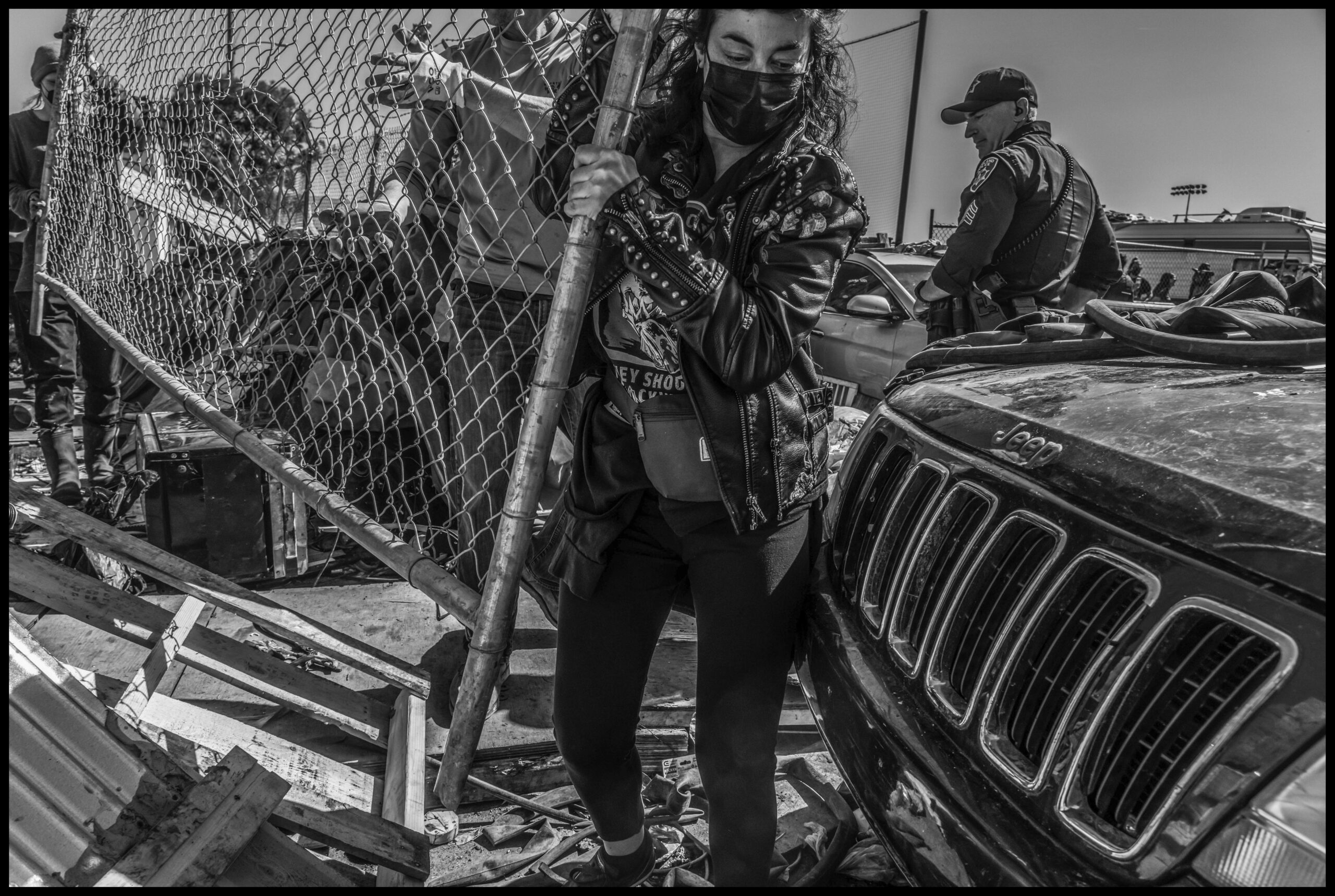
A community supporter moves a chain-link fence section to bar access to the Wood Street Commons encampment.
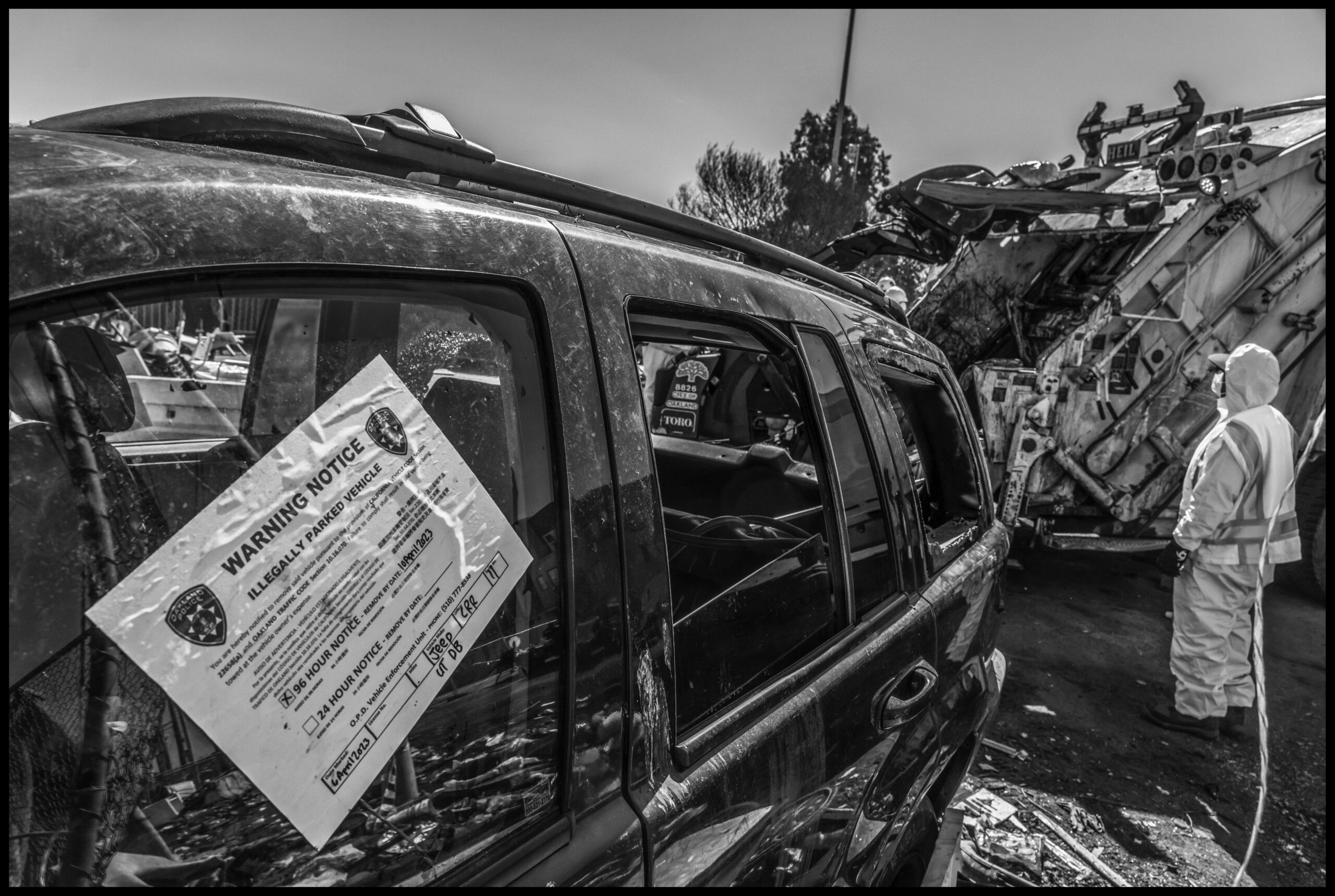
The city of Oakland posted notices on vehicles announcing that it would begin removing vehicles, which serve as homes for many residents, starting on April 10. Behind the SUV, an earth mover loads an item into a garbage truck.
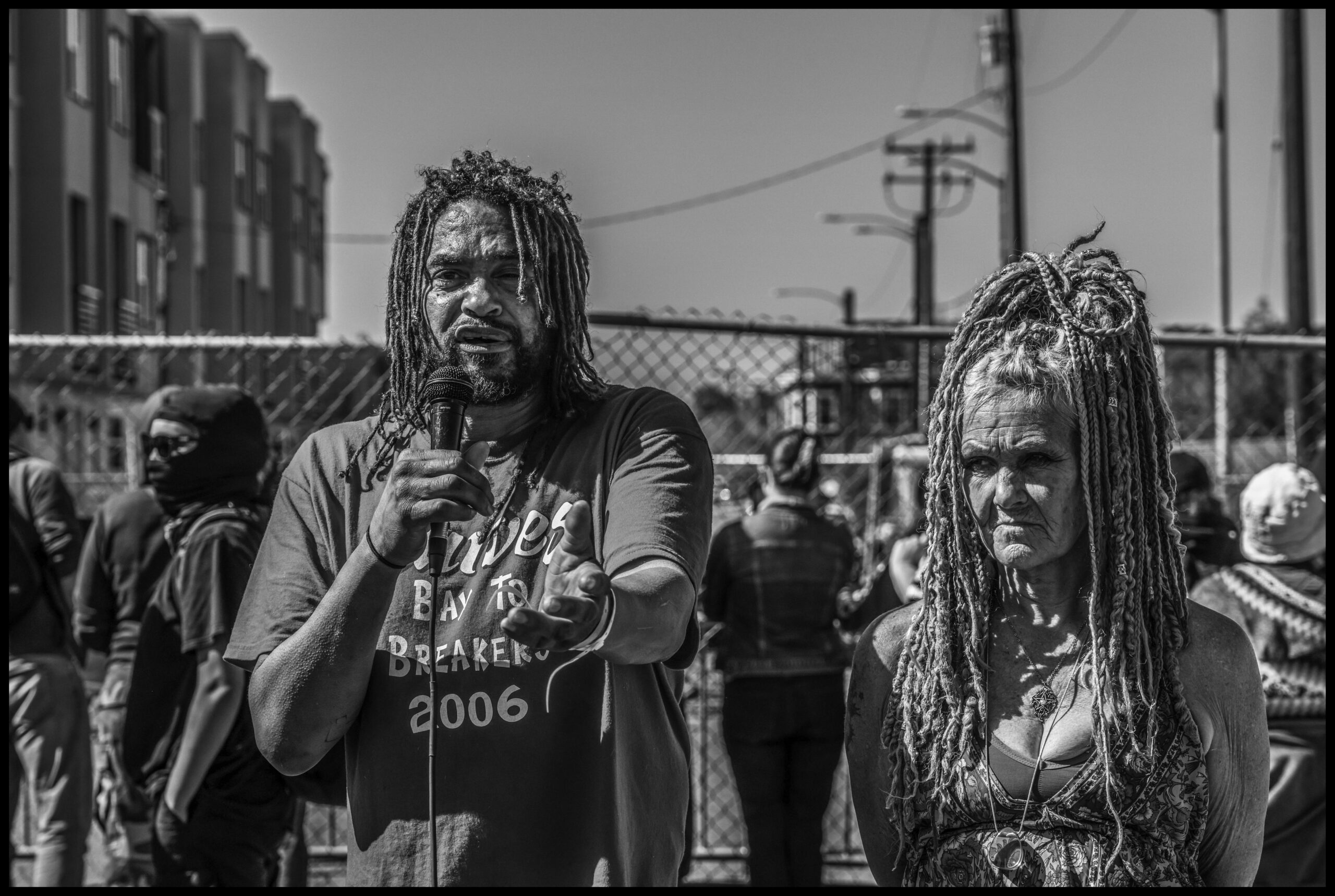
Commons leader John Janosko speaks at a protest the day the evictions started. He proposed last fall that the city allow residents to move onto the old Army base on the other side of the freeway. “We want our community to stay intact,” he explained in an interview. “And it wouldn’t be hard for us to move there, especially if the city helped us build small houses and a center and community kitchen where we could have services and meetings to keep ourselves organized.”
After city administrators refused to implement his proposal, city councilperson Carroll Fife, former organizer for Moms for Housing, said she was “disgusted.”

Gawit (David) Mesfin tries to move the many bicycles and parts next to his living area before the earth movers arrive. He repaired bicycles, and sometimes stored them, for many residents and other unhoused people.
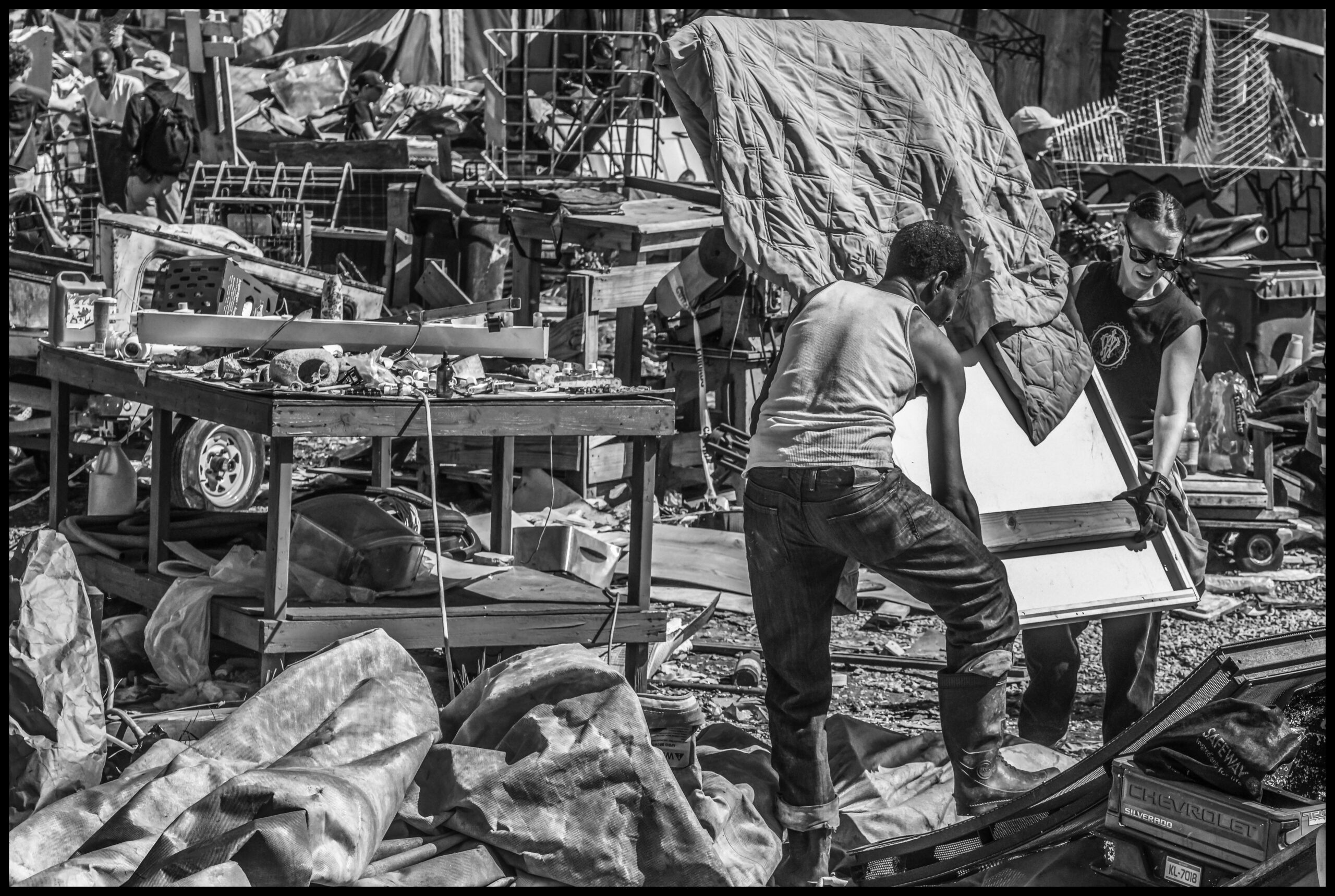
Gawit (David) Mesfin and a helper move a panel from the structure where he lived to an area where a truck might be able to move it to another site.

Gawit (David) Mesfin was born in Ethiopia. “I left when I was 8 because of the wars after my parents were killed. I was taken to India first, but then I was deported. I finally got to the U.S. when I was 18, and I’m 38 now. I’ve been living here for seven or eight years.”
 Tommygun Goodluck stands in the doorway of the two-story house he built. He said that the construction took him two years.
Tommygun Goodluck stands in the doorway of the two-story house he built. He said that the construction took him two years.

Inside his house are the tools and other machinery that Tommygun Goodluck uses to fix things for other residents of Wood Street Commons.
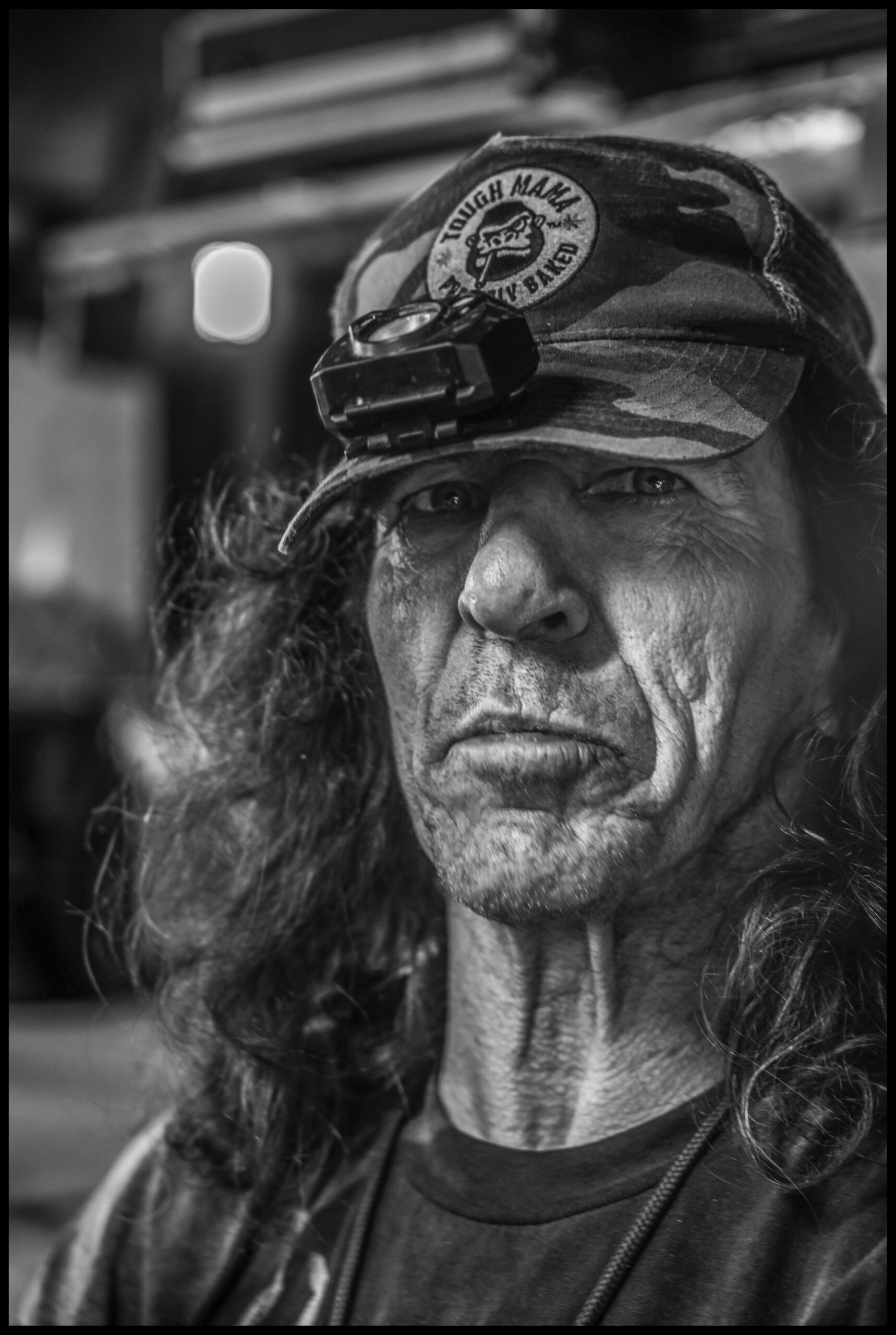
“I came here with my friend Jeff four years ago,” Tommygun Goodluck said. “I’m a carpenter, and I lived in an RV for a few years in Las Vegas. I wanted to go to Venice because I had this dream of parking my RV by the beach, where I could just step out the door onto the sand. But Jeff convinced me to come here. There was hardly anyone here when we came. This house did have a third story with a garden, but the wind took it. It has a two-car garage in back, where my Harleys are.”
I asked Tommygun what he thought would happen to his house now. “Things aren’t going to go well for me,” he answered. “I’m probably going to lose everything. Hopefully, not the Harleys.”

Tommygun’s friend Jeff outside the RV where he’s lived for four years. “This is the best place I’ve ever lived,” he said. “People here help and support each other. Like if you want a cup of sugar, you can just ask. I’m trying to rescue the cats and especially the kittens before the dumpsters get them.”
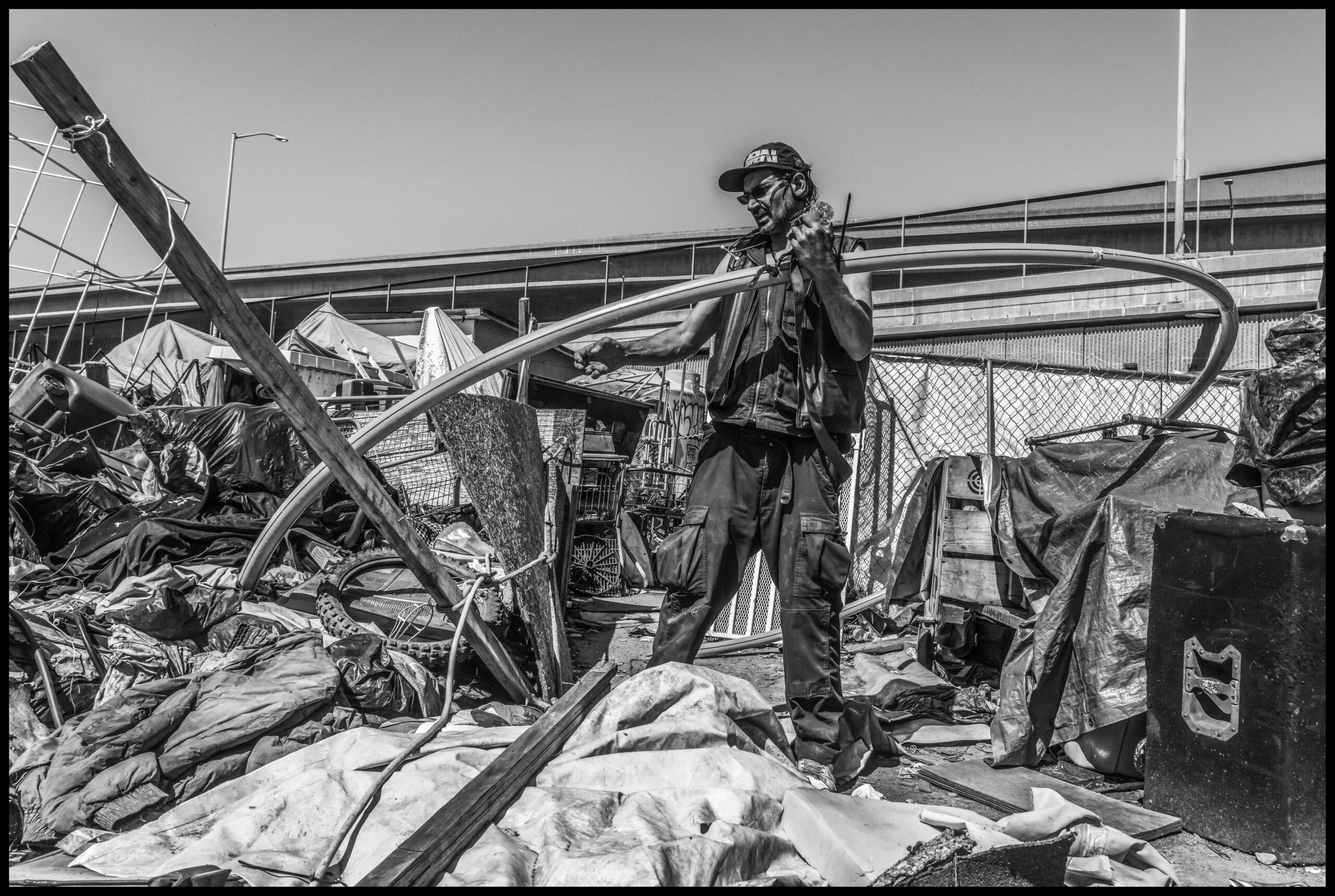
Tariq, an unhoused resident who didn’t want to talk, moves some of the items around his living area next to the freeway wall.
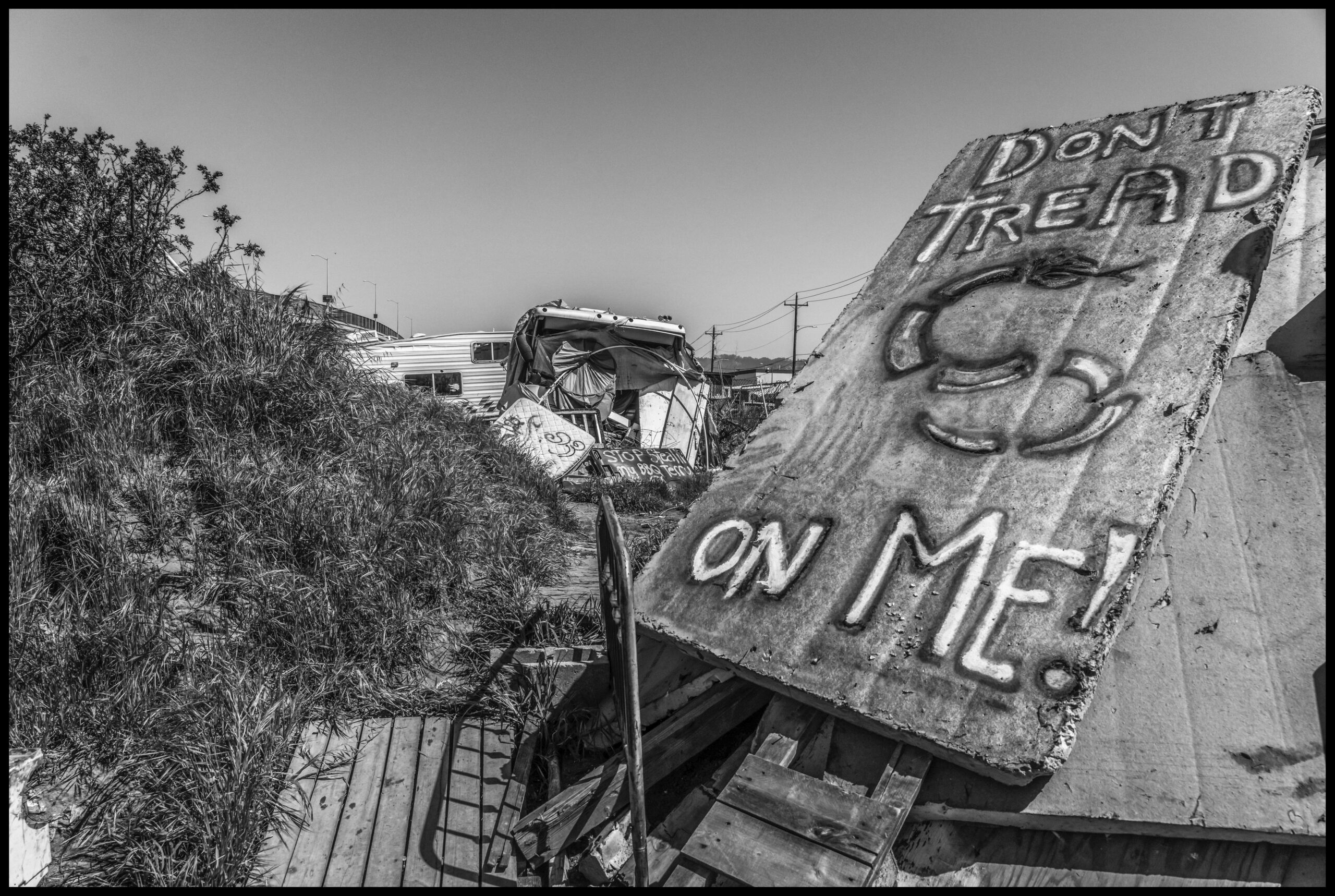
A sign painted by Wood Street Commons residents.
Note on names: Many of the unhoused people living in the Commons, like unhoused people in general, are very protective of their privacy because of previous problems with what they perceive as very hostile authorities. Some people give their names freely, while others want to give only a first name, or none at all. In addition, many adopt names that are part of their chosen identity. I tried to respect people’s choices about this in interviews and while taking their photographs.
All photos by David Bacon.

-

 Latest NewsDecember 8, 2025
Latest NewsDecember 8, 2025This L.A. Museum Is Standing Up to Trump’s Whitewashing, Vowing to ‘Scrub Nothing’
-

 Striking BackDecember 4, 2025
Striking BackDecember 4, 2025Home Care Workers Are Losing Minimum Wage Protections — and Fighting Back
-
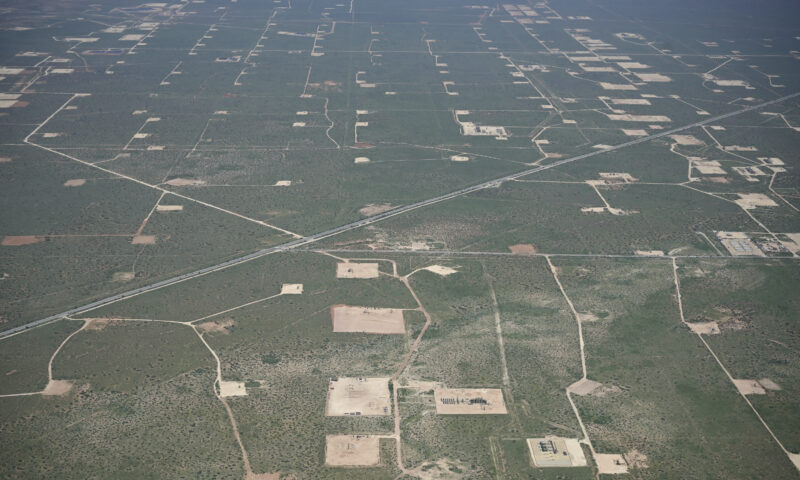
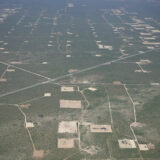 The SlickDecember 2, 2025
The SlickDecember 2, 2025Utility Asks New Mexico for ‘Zero Emission’ Status for Gas-Fired Power Plant
-

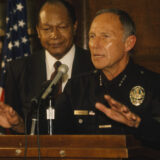 Latest NewsDecember 1, 2025
Latest NewsDecember 1, 2025Accountable to No One: What 1990s L.A. Teaches Us About the Trump Resistance
-

 Dirty MoneyDecember 3, 2025
Dirty MoneyDecember 3, 2025Trump’s Anti-Climate Policies Are Driving Up Insurance Costs for Homeowners, Say Experts
-

 Child FarmworkersDecember 5, 2025
Child FarmworkersDecember 5, 2025To Protect Underage Farmworkers, California Expands Oversight of Field Conditions
-

 Column - State of InequalityDecember 4, 2025
Column - State of InequalityDecember 4, 2025Can California Claw Back Some Medi-Cal Care?
-

 Latest NewsDecember 10, 2025
Latest NewsDecember 10, 2025Capital & Main, L.A. Times Win Sidney Award for Reporting on Child Farmworkers

